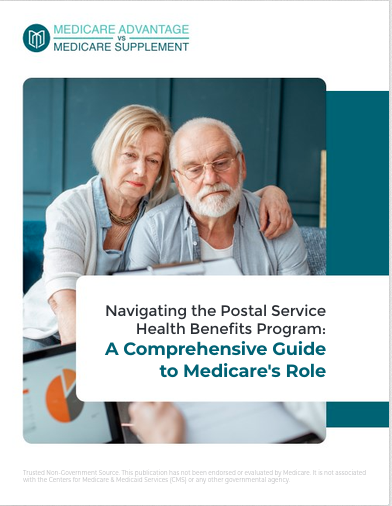Key Takeaways
- Medicare covers emergency transportation services under specific conditions, ensuring beneficiaries receive necessary care in urgent situations.
- Understanding the criteria for coverage, types of transportation covered, associated costs, and how to ensure coverage can help beneficiaries effectively navigate emergency medical needs.
What You Need to Know About Medicare’s Emergency Transportation Coverage
Medicare, the federal health insurance program primarily for individuals aged 65 and older, as well as certain younger individuals with disabilities, provides essential coverage for various medical services. Among these services is emergency transportation, which ensures that beneficiaries receive immediate medical care during urgent situations. Understanding Medicare’s emergency transportation coverage, including the criteria for coverage, types of transportation, associated costs, and steps to ensure coverage, is crucial for beneficiaries. This article provides detailed information on these aspects.
Overview of Medicare’s Emergency Transportation Coverage
Medicare covers emergency transportation services when immediate medical attention is necessary. This typically involves ambulance services, which can include ground or air transportation depending on the situation’s urgency and the patient’s location.
Ground Ambulance Services
Ground ambulance services are the most common form of emergency transportation covered by Medicare. These services are used when a patient requires immediate medical attention and cannot be safely transported by other means. The ambulance must be equipped to provide basic life support (BLS) or advanced life support (ALS) depending on the patient’s needs.
Air Ambulance Services
Air ambulance services, including helicopters and fixed-wing aircraft, are covered by Medicare in extreme emergencies where ground transportation is not feasible. This typically occurs in situations where the patient is in a remote location, and immediate transport to a medical facility is critical for survival.
Criteria for Medicare-Covered Emergency Ambulance Services
Medicare sets specific criteria that must be met for emergency ambulance services to be covered. Understanding these criteria can help beneficiaries ensure their transportation costs are covered in an emergency.
Medical Necessity
The primary criterion for Medicare coverage of emergency transportation is medical necessity. The situation must be such that any other mode of transportation could endanger the patient’s health. Medical necessity is determined by a physician or qualified healthcare provider who certifies that the emergency transport is required.
Sudden Onset of a Medical Condition
The need for emergency transportation must arise from a sudden onset of a medical condition or an acute exacerbation of a chronic condition. Examples include heart attacks, strokes, severe injuries from accidents, or significant respiratory distress.
Medicare-Approved Provider
The ambulance service must be provided by a Medicare-approved provider. This means the ambulance company must meet specific standards and be enrolled in the Medicare program. Using non-approved providers can result in denial of coverage.
Types of Emergency Transportation Covered by Medicare
Medicare covers various types of emergency transportation, primarily focusing on ambulance services. The coverage details depend on the mode of transport and the medical necessity.
Basic Life Support (BLS) Ambulance
BLS ambulances provide basic emergency medical care during transportation. They are equipped to handle situations requiring stabilization and basic treatment, such as administering oxygen, monitoring vital signs, and performing CPR. BLS services are covered when the patient’s condition necessitates basic medical intervention during transport.
Advanced Life Support (ALS) Ambulance
ALS ambulances are equipped for more complex medical emergencies. They carry advanced medical equipment and are staffed by paramedics trained to provide treatments such as intravenous therapy, advanced airway management, and cardiac monitoring. ALS services are covered when the patient’s condition requires a higher level of medical care during transport.
Air Ambulance Services
Air ambulances, including helicopters and fixed-wing aircraft, provide rapid transport for critically ill or injured patients. These services are covered by Medicare when ground transportation is not feasible, and the patient’s condition requires immediate transport to a medical facility that can provide specialized care.
Costs and Copayments for Medicare Emergency Transportation
While Medicare provides coverage for emergency transportation, beneficiaries may still be responsible for certain costs. Understanding these costs can help beneficiaries plan and manage their healthcare expenses.
Part B Deductible
Emergency transportation services are covered under Medicare Part B. Beneficiaries must first meet the annual Part B deductible before Medicare begins to cover the costs. As of 2024, the Part B deductible is $240. This amount may change annually, so it’s essential to stay updated on current rates.
Coinsurance
After meeting the Part B deductible, beneficiaries are typically responsible for 20% of the Medicare-approved amount for the ambulance service. Medicare covers the remaining 80%. The exact out-of-pocket cost can vary based on the specific service and geographic location.
Balance Billing
In some cases, ambulance providers may charge more than the Medicare-approved amount. This practice, known as balance billing, requires beneficiaries to pay the difference between the provider’s charge and the Medicare-approved amount. It’s essential to verify whether the ambulance provider accepts Medicare assignment to avoid unexpected costs.
Steps to Ensure Medicare Covers Your Emergency Transportation
Ensuring that Medicare covers emergency transportation services involves taking several proactive steps. Being prepared can help avoid unexpected costs and ensure timely medical care.
Verify Medicare Coverage
Before an emergency arises, verify that your ambulance provider is Medicare-approved. This information can typically be obtained from the provider or your local Medicare office. Having this information on hand can save valuable time during an emergency.
Obtain a Doctor’s Certification
Whenever possible, ensure that a doctor or qualified healthcare provider certifies the medical necessity of the emergency transport. This certification should be documented and provided to the ambulance service to ensure coverage.
Keep Detailed Records
Maintain detailed records of all medical transportation services, including dates, times, and reasons for the transport. These records can help verify the medical necessity and facilitate any appeals process if a claim is denied.
Know Your Rights
Understand your rights under Medicare, including the appeals process if your claim for emergency transportation services is denied. Knowing how to appeal a denial can help ensure that you receive the coverage you are entitled to.
Additional Resources for Understanding Medicare’s Emergency Transportation Benefits
Several resources are available to help beneficiaries understand and navigate Medicare’s emergency transportation coverage.
Medicare.gov
The official Medicare website provides information on coverage, eligibility, and costs. The site includes tools to find Medicare-approved providers and compare plan options.
State Health Insurance Assistance Programs (SHIP)
SHIP offers free, unbiased counseling to Medicare beneficiaries. These programs can help answer questions about coverage, eligibility, and claims processes. Contact your local SHIP office for personalized assistance.
Medicare Customer Service
For specific questions about your coverage or claims, contacting Medicare customer service directly can provide the necessary information. Representatives can help clarify coverage details and guide you through the claims process.
Conclusion
Understanding Medicare’s emergency transportation coverage is crucial for beneficiaries to ensure they receive timely and necessary medical care in urgent situations. By knowing the criteria for coverage, the types of transportation covered, associated costs, and steps to ensure coverage, beneficiaries can navigate their healthcare needs more effectively. Utilizing available resources and being proactive in managing healthcare details can help avoid unexpected costs and ensure access to essential emergency services.
Contact Information:
Email: [email protected]
Phone: 4695553456










